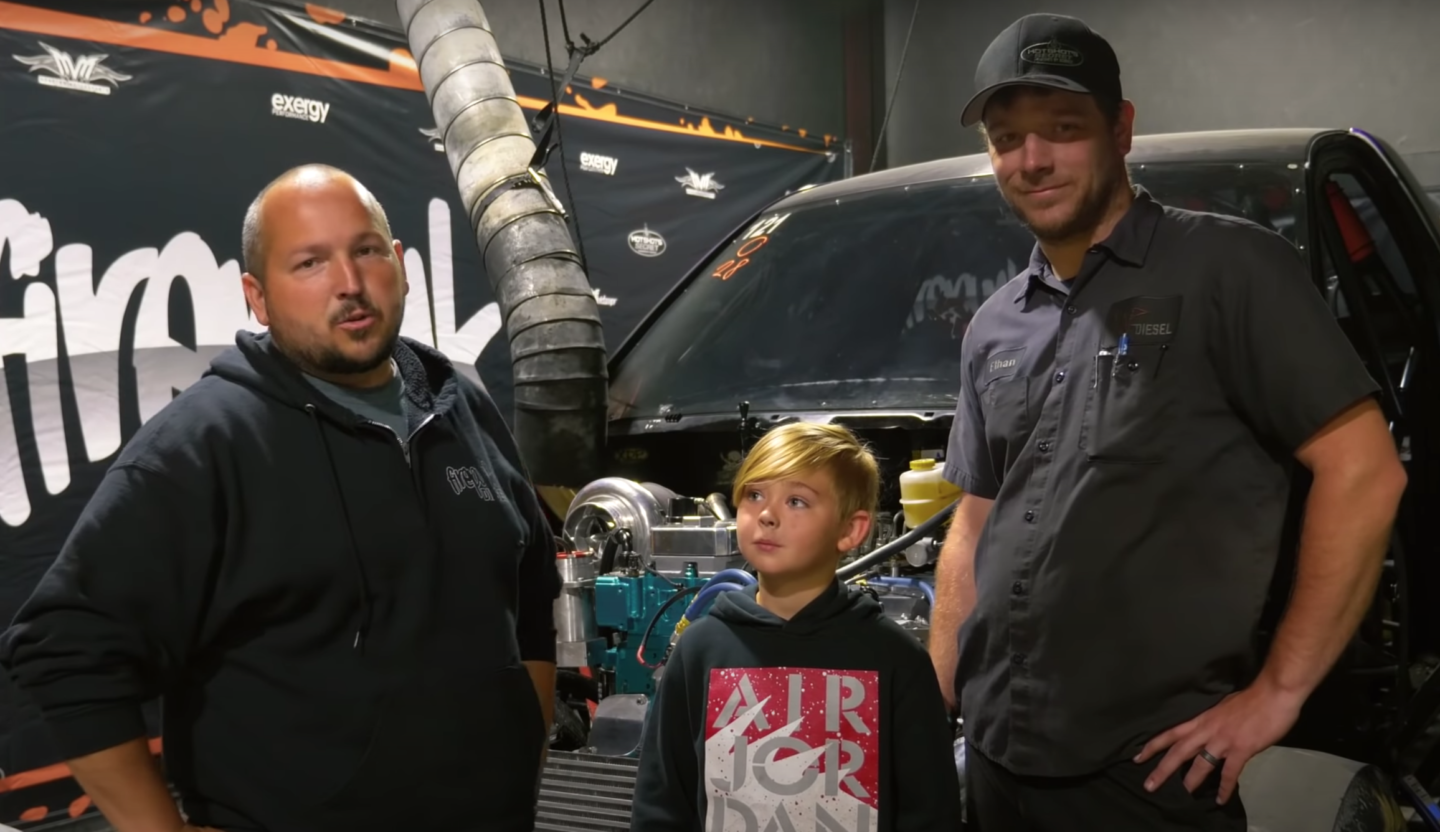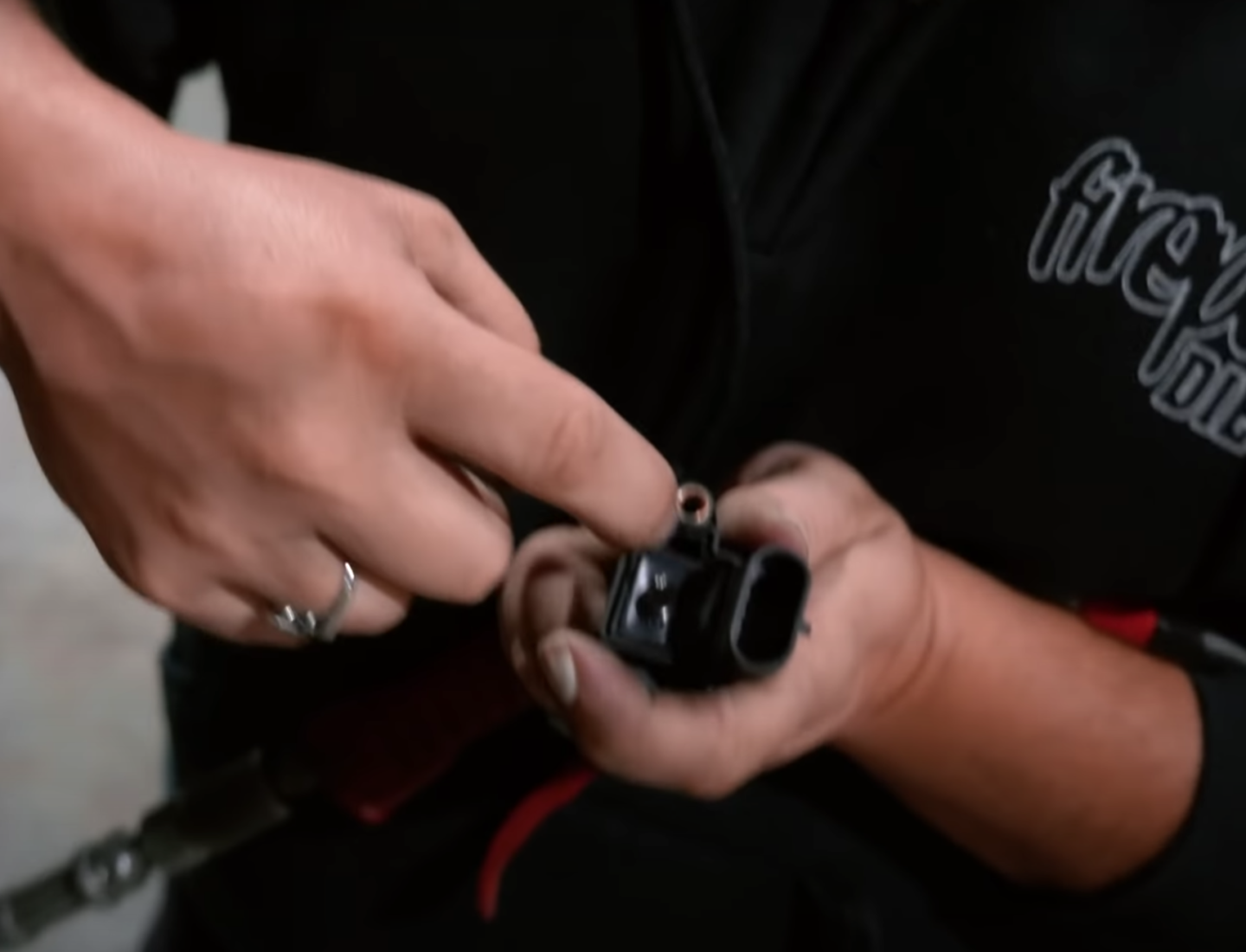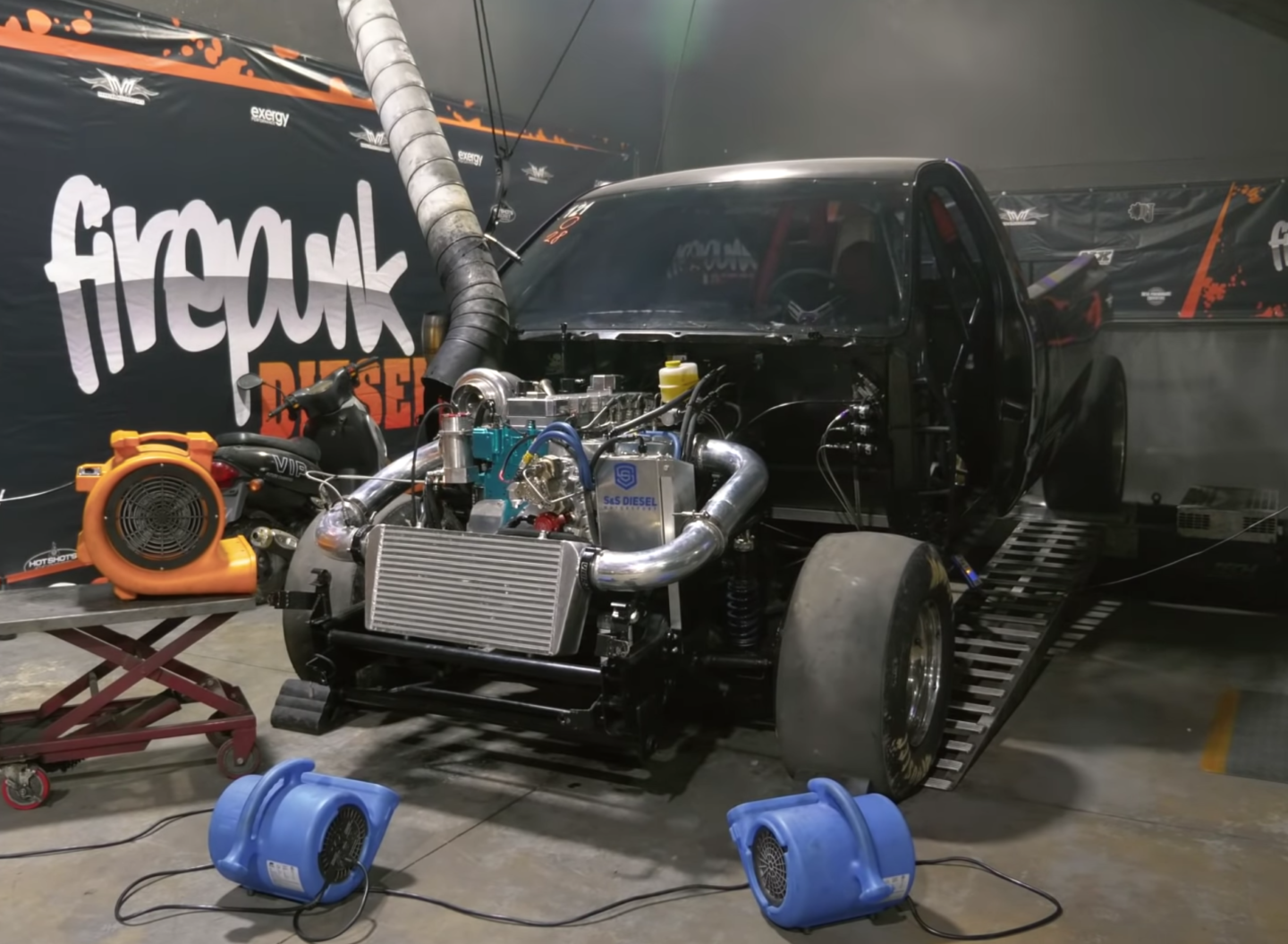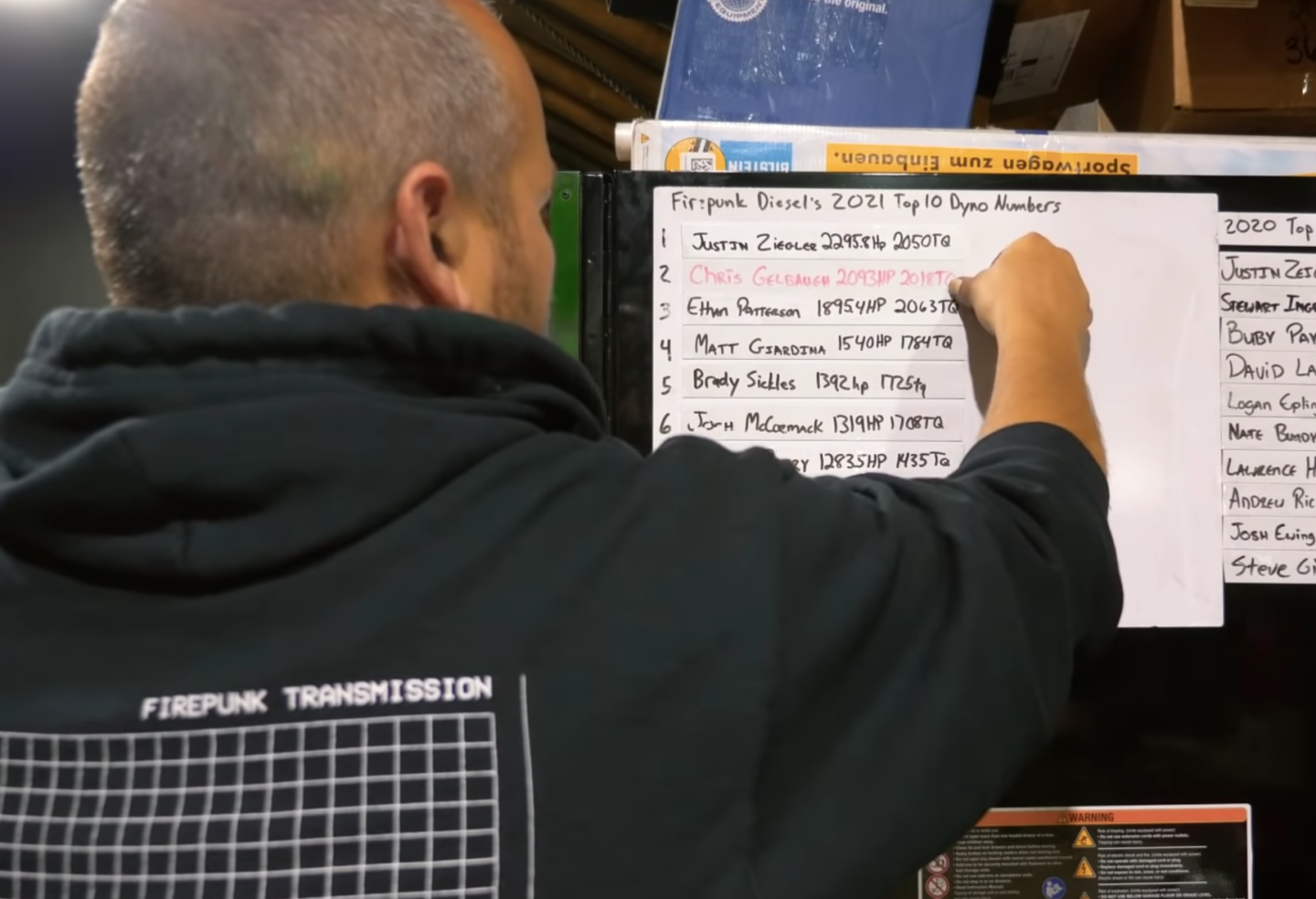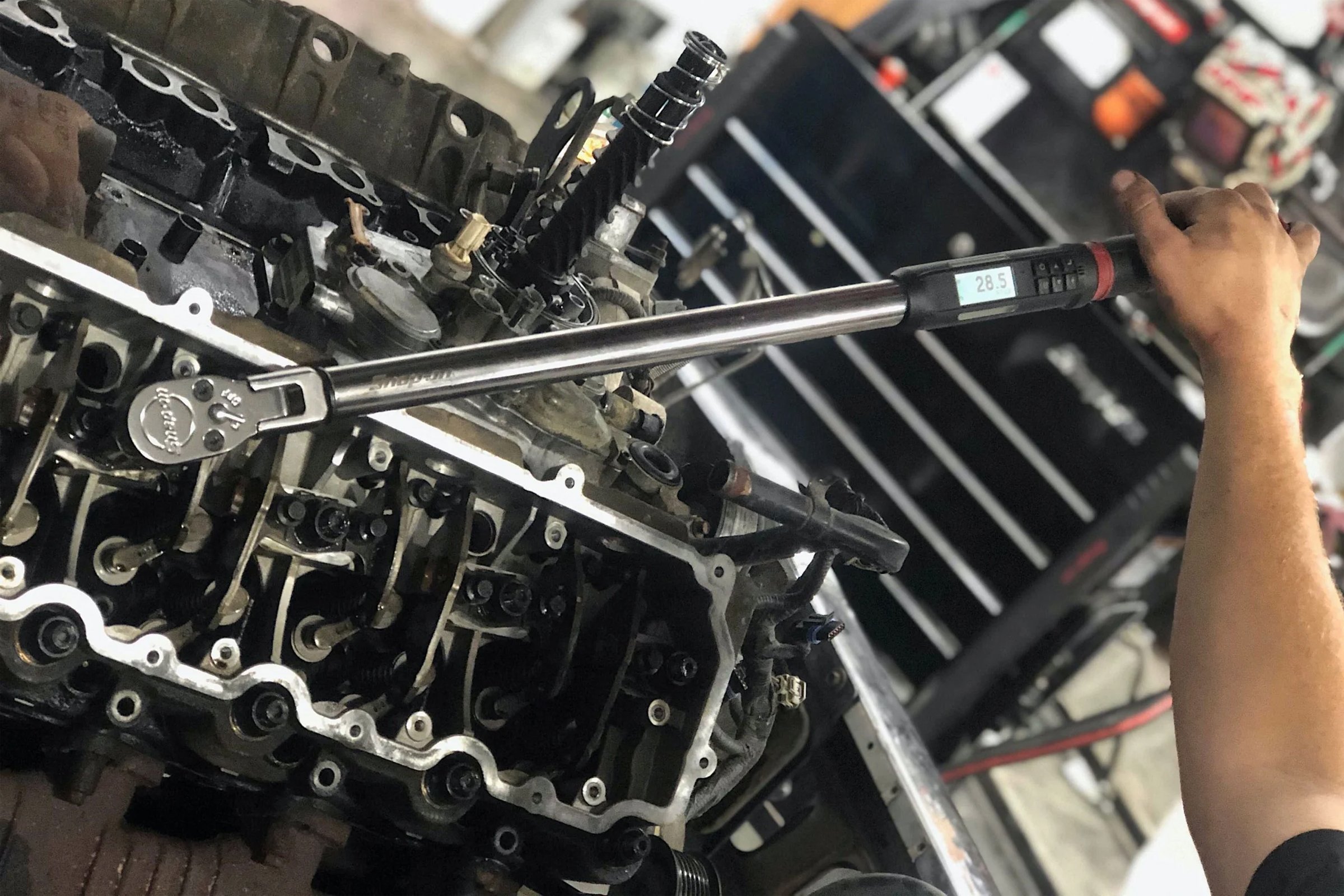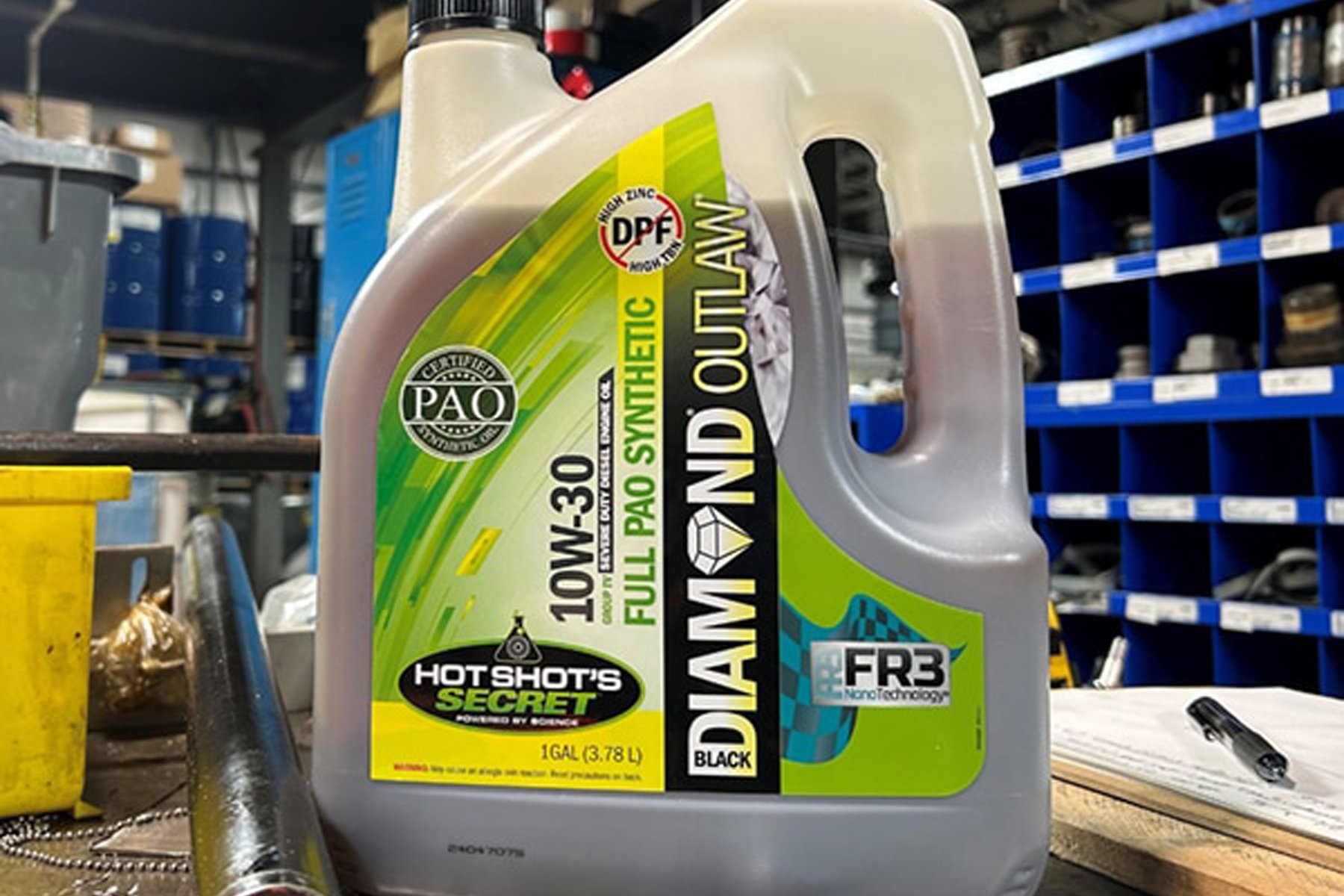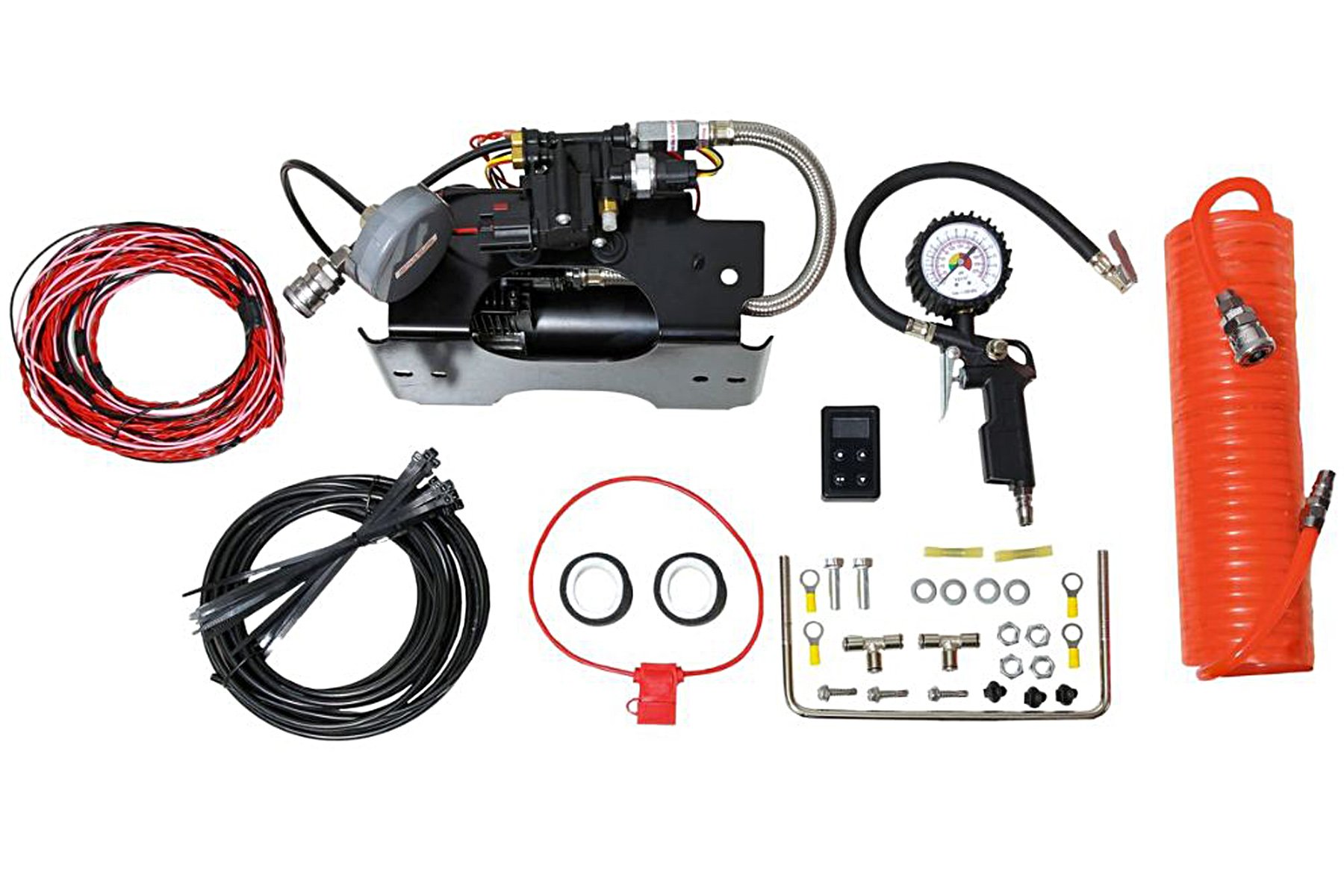Ethan Patterson is building a following on the No-Prep drag racing circuit in his diesel-powered Dodge Ram. In a recent event, he made a solid first pass, however on his second trip down the quarter-mile, at the 330’ mark, the truck lost power and nosed over, losing 23 mph.
Patterson, who owns Wilson Patterson Diesel in West Lafayette, Ind., couldn’t figure out the problem so he called Lavon Miller at Firepunk Diesel in Plain City, Ohio. Miller told him to bring the truck to him and they would check it out on his dynamometer. With the controlled environment of a dyno, he could do a thorough analysis and dial in the engine.
The engine is a 6.7-liter Cummins with D&J rods, billet pistons, and a Freedom head. The turbocharger is a single from Stainless Diesel with a 5-blade S485 turbo on top of a Stainless T6 competition exhaust manifold that accommodates dual 40mm external wastegates. Fuel delivery is handled by injectors with 500 percent-over nozzles and dual CP3 injection pumps. The 48RE transmission is built with numerous Sonnax parts, a Sun Coast E618 valve body, and a PCS standalone controller.
The Diagnosis
Miller started the dyno session by checking for a boost leak in the system. He found that the guts had been blown out of a factory map sensor, which caused a noticeable leak. Next, he started with fuel-only runs, swapping out a 5.9-liter rail-pressure sensor to a 6.7-liter unit. This got the rail pressure reading up to 29000 psi. The engine made 1,197 hp at 1000 microseconds and 1,310 hp at 1400 microseconds.
Time to Make Some Power
Then the fun began. It was nitrous time. The crew started with a .078 jet to dial in the wastegates. Miller said he wanted to make sure the wastegates open when Patterson gives the engine “a smack of nitrous and not end up in a fireball.”
With two nitrous kits, the engine made 1590-horsepower. Miller explained that each kit adds about 130 hp. At maximum output with three kits, the engine made 1,895-horsepower at 1300 microseconds. Miller planned to flash the ECU one more time. This would give Patterson four or five different setups that he can use to adjust to a given track, weather, and other factors that affect track conditions.
On the unofficial ranking on the side of Miller’s toolbox, 1,895-horsepower moved Patterson up to the third spot. More importantly, he’s hoping that the improved performance of his engine keeps him moving to the top of the charts in No-Prep racing.
